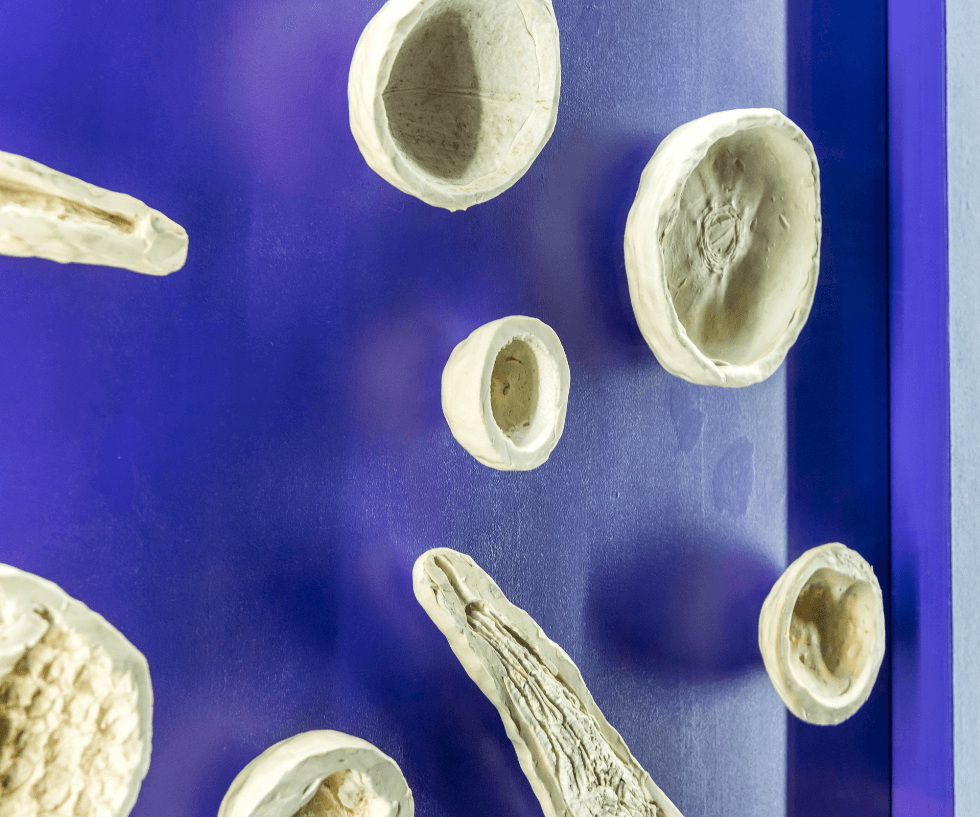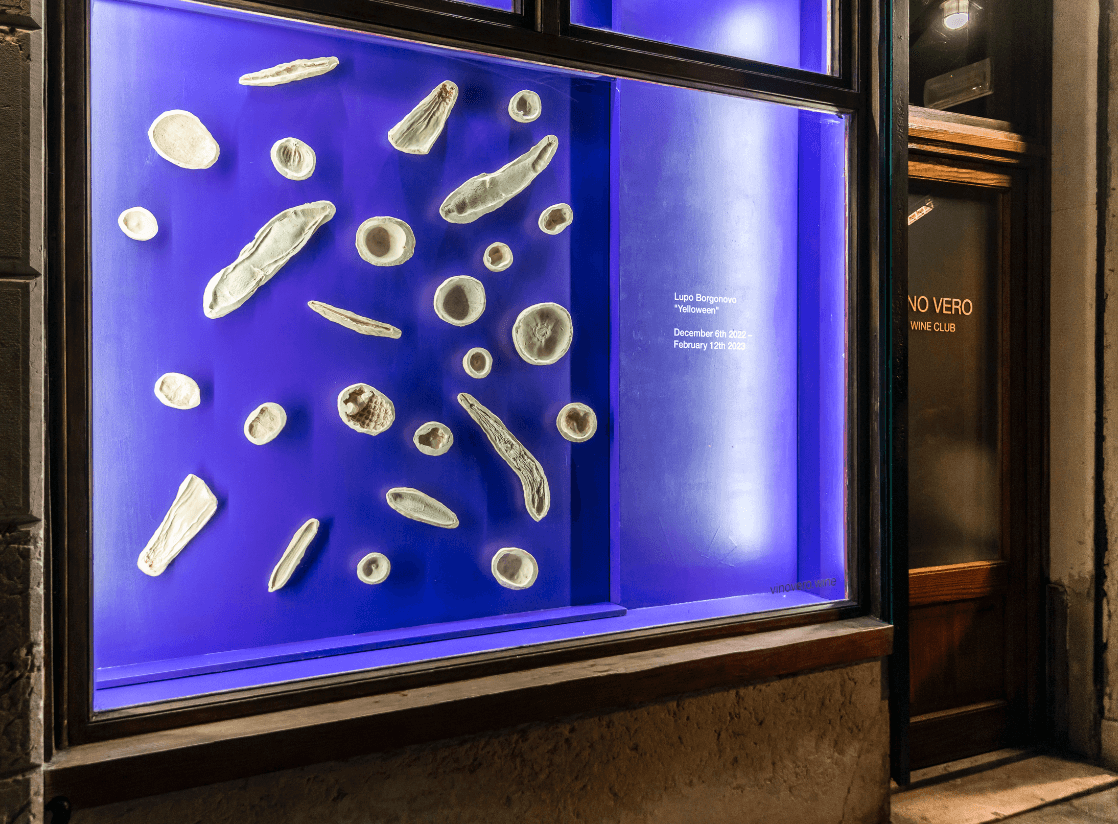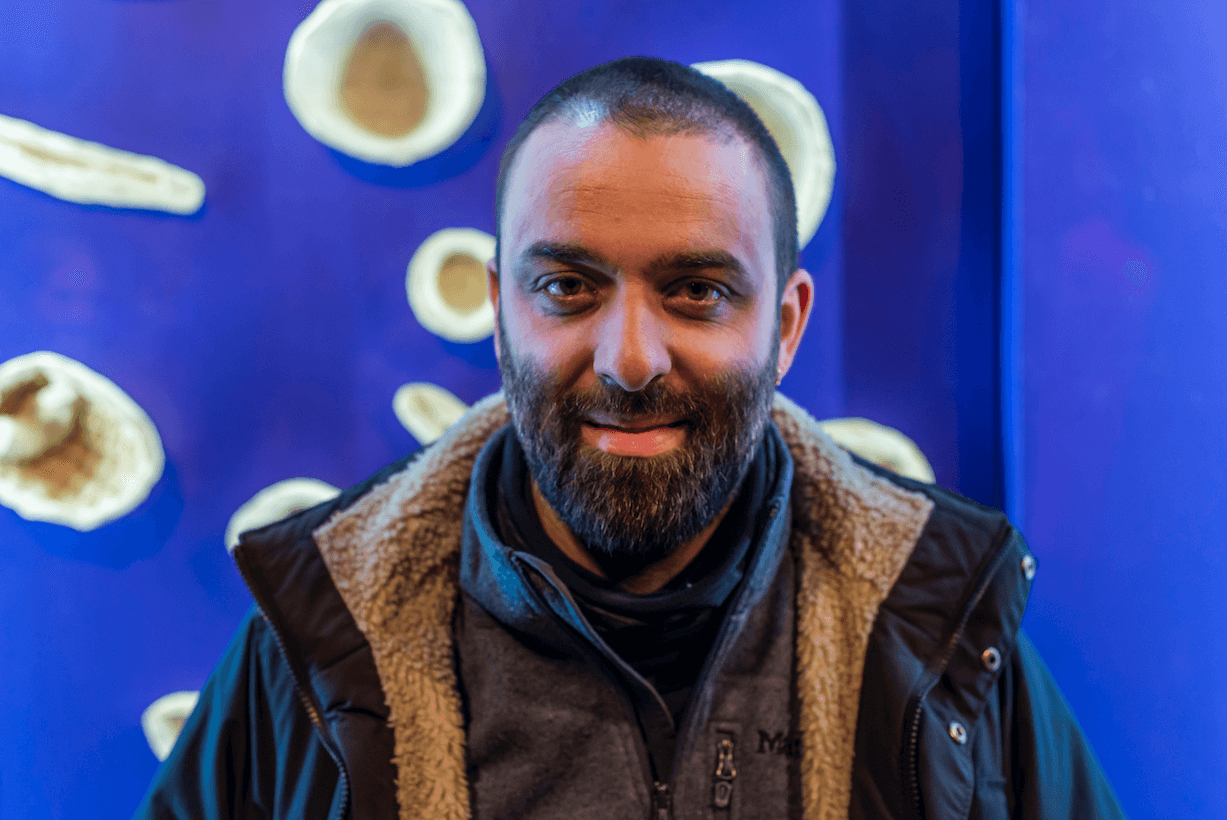Yelloween: an interview with Lupo Borgonovo
Lupo Borgonovo
For the sixth edition of Vetrina, you presented “Yelloween”, a site-specific piece consisting of a series of casts of fruit, transformed through the use of a plastic material. From the dialogue between organic and synthetic forms, a variety of natural shapes return to the viewer’s gaze with a new metaphorical meaning. Can you tell us in more detail what these technical and compositional manipulations consist of?
In the process of creating this work, what remains of the different fruits I selected from various shops in Via Padova in Milan is the negative imprint of their surfaces; masses and volumes have disappeared and what remains are rubber shells that faithfully reproduce their vegetal surfaces in negative. The fruits I used come from various geographical origins and I chose them either for their formal characteristics or for their strangeness: many of them I have never seen before, I do not even know their names and nor have I ever eaten them; I used them exclusively to make sculptures. The work is a reinterpretation of the classic still life but it is also the result of urban drifting and the misuse of a series of objects.

Your artistic oeuvre takes on two strands: that of drawing and that of sculpture. How did your relationship to these media come about and why are they considered the most intimately connected to you? Does one, over the other, express more immediately what you want to communicate?
Drawing and sculpture move in parallel throughout my work. I use both languages to transform existing objects from everyday life, from nature, or from art collections. In both cases it is always a matter of translating/transforming an object into another object and an image into another image. My interest in both drawing and sculpture is to create images that remind one of the other.
In your research you use different materials such as natural elements, historical artefacts and everyday objects. Selected for their formal singularity, these materials are then manipulated and transformed into something ‘other’ and decontextualised, becoming the expression of a new symbolic meaning. What does this process of critical reinterpretation mean to you?
It is a process of re-elaborating reality, by which I transform things by moving them further and further away from their original meaning or recognisable form. In this displacement there is the possibility that something known appears almost completely transformed, this feeling of recognition and strangeness is what I work on.

A Milanese by birth and by choice, in addition to your work as an artist you have worked and continue to work in various professions. Can you briefly tell us how these various experiences influence your research and your work as an artist? What stimuli do you find in this city and what are your main sources of inspiration in Milan?
The professions I carry out on a daily basis have their own specificities, but like drawing and sculpture, they run parallel as declinations of different everyday experiences. In teaching, I have the opportunity to work with students on topics such as improvisation, the relationship between word and image, the exploration of urban space and its interpretation in the form of collage. Working as a rider allows me to see the city without being seen and to meet people I would have never met otherwise. Through this job I am creating an archive of photographs taken inside Milanese buildings. These experiences are distilled in each of my works.





